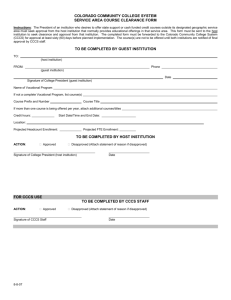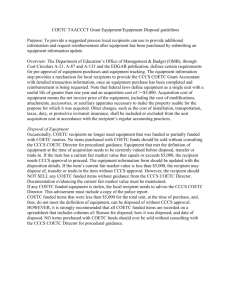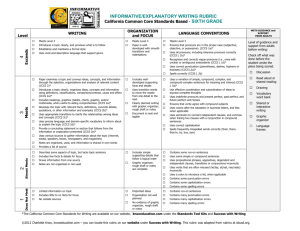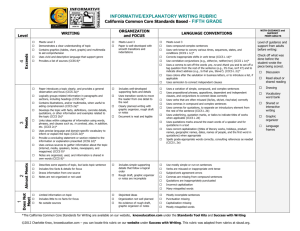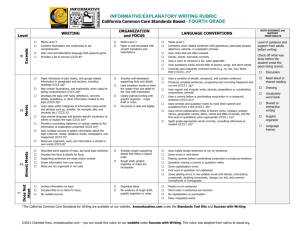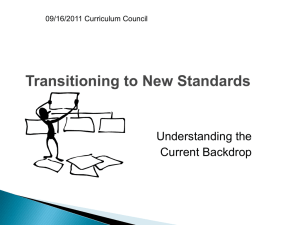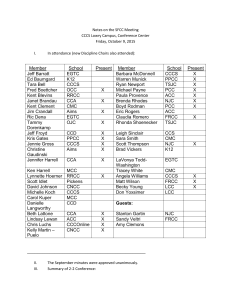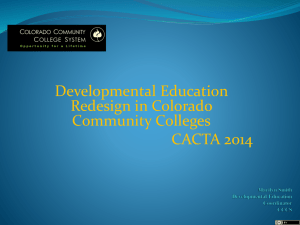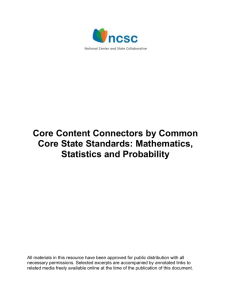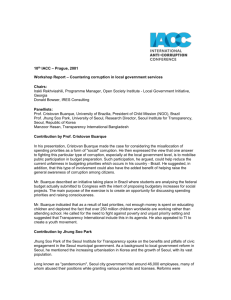Overview for Boards
advertisement
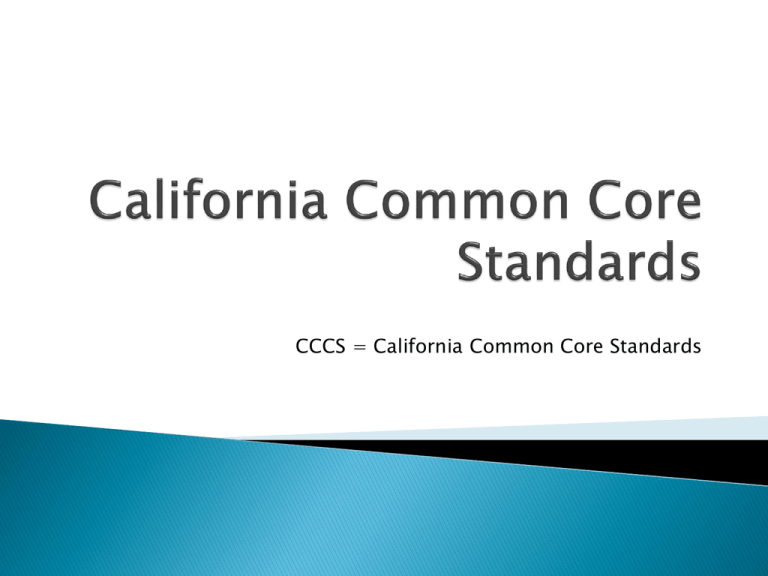
CCCS = California Common Core Standards Common Core standards corresponds with the original NCLB timeline of 2014 Students need real world skills for college and the workforce Standards address international competition, equity and collaboration The development of these National Common Core Standards included: Parents Educators Content Experts Researchers National Organizations Community leaders from 48 states Input from top performing countries – Japan, Taiwan, Singapore, Finland, England, India Each state is required to start with the National Common Core standards as written. California adopted the Common Core (National) in August 2010 - CCS California inserted15% of current state standards into CCS Final set for California are called California Common Core Standards or CCCS Aligned with college and work force expectations Clear, understandable, and consistent Rigorous content and application of knowledge through higher-order skills Recognition of the strengths and lessons of current state standards ELA standards focus equally on fiction and nonfiction Inclusion of Listening and Speaking Standards in ELA for all students Stronger description of standard English conventions and language vocabulary acquisition Separate set of literacy standards for content courses (6th – 12th) which focus on communication, reading and writing skills required for college and career success CCCS standards for mathematics: ◦ Focus on the Mathematical Practice Standards K-12 ◦ Develop Conceptual Understanding ◦ Emphasis on Mastery ◦ Balance mathematical understanding and procedural skill ◦ Focus on Fractions ◦ Are internationally benchmarked 1. 2. 3. 4. 5. 6. 7. 8. Make sense of problems and persevere in solving them Reason abstractly and quantitatively Construct viable arguments and critique the reasoning of others Model with mathematics Use appropriate tools strategically Attend to precision Look for and make use of structure Look for and express regularity in repeated reasoning CCS (National) do not have Algebra as an 8th grade standard; rather embedded throughout grade levels California CCS (State) included the 8th Grade Algebra course current state standards to the CCCS Two pathways in the CCCS for 8th grade 8th grade Algebra 8th grade Mathematics Standards are listed as conceptual categories rather than courses. Number and Quantity Algebra Functions Modeling Geometry Statistics and Probability HS pathways could be: ◦ Course specific (Algebra 1, Geometry, Algebra II, etc) ◦ Grade level specific with conceptual categories woven through each level (9th grade, 10th grade, etc) State is still deciding if this is a state or local decision as to pathway options for students Links classroom mathematics and statistics to everyday life, work and decision-making. A model can be very simple, or quite complex. Modeling is best interpreted not as a collection of isolated topics but rather in relation to other standards. Examples: Design the layout of the stalls in a school fair so as to raise as much money as possible. It is not recommended that districts do a one to one correlation when adopting the CCCS In order to highlight the differences in depth and rigor – see handout 2 Emphasis on: gathering information, synthesizing information, communicating information, using technology and strong critical analysis skills The CCCS are expected to be implemented by 2012-2013 CST will be replaced with a national exam in 2014- 2015 National assessments will be administered in grade 3-8 and once in high school New national exams are being developed by two major organizations: ◦ Smarter Balance Assessment Consortium (SBAC) – Washington State ◦ Partnership for Assessment of Readiness for College and Careers (PARCC) - Florida Assessment will also include documentation that students are on track to become college and career ready. Assessments are proposed to be NWEA “like”, assessing 4 times a year and computer based and project based. Federal government is challenging all states to develop (if they have not already) a growth model rather than a proficiency model of assessment. California currently has a growth model. Create awareness of CCCS with parents, community members, teachers and students Remain informed about state timeline and guidelines for lifting the suspension on framework development and instructional materials adoptions Continue to promote and enhance Performance Based Assessments currently being used in our district (i.e. MAC, MS Science PBA, Physics PBA, Writing PBAs K12) because they are similar in nature to the expected National Exam Provide Professional Development for teachers and administrators around CCCS Begin now to teach academic language used in CCCS which is not currently in the state standards Develop curriculum teams to revise pacing guides for CCCS in SCUSD Prepare and plan for enhanced technology needs
